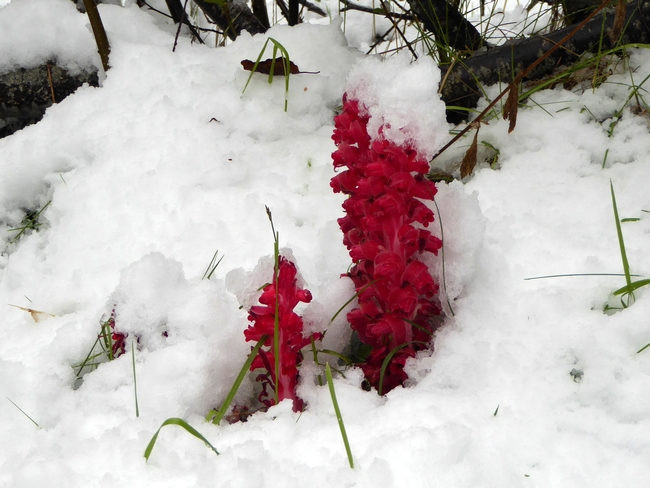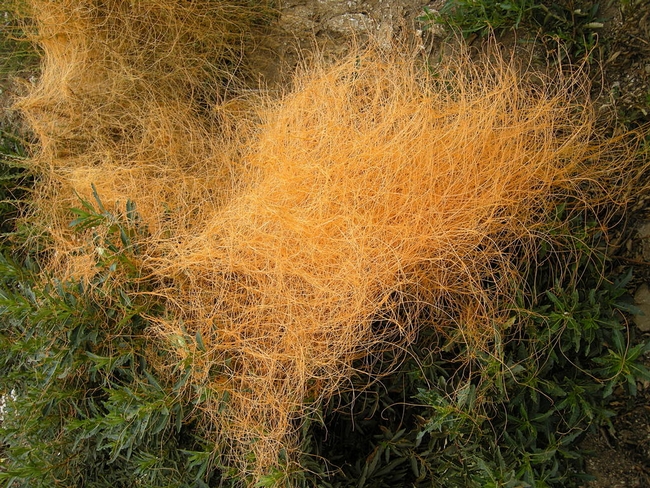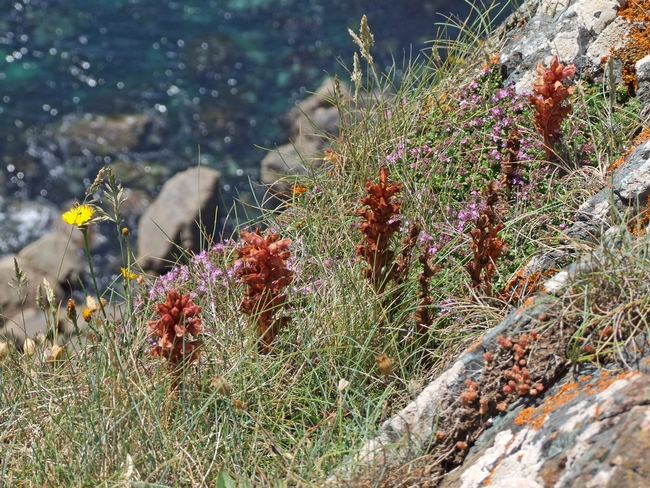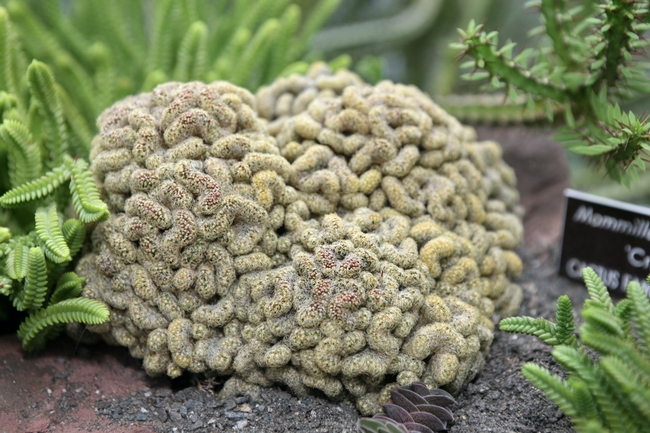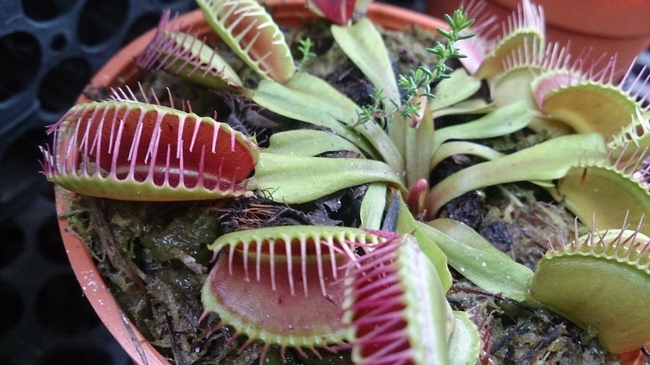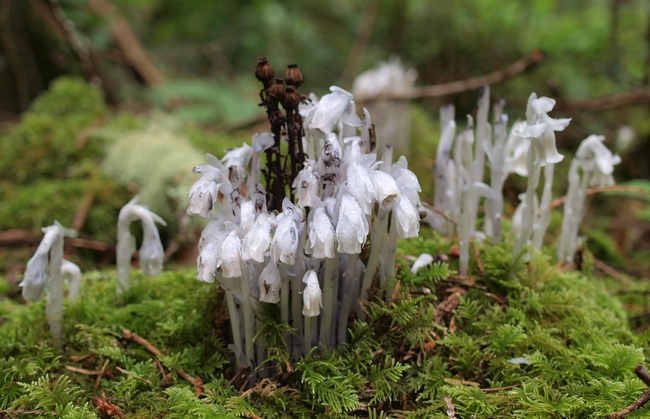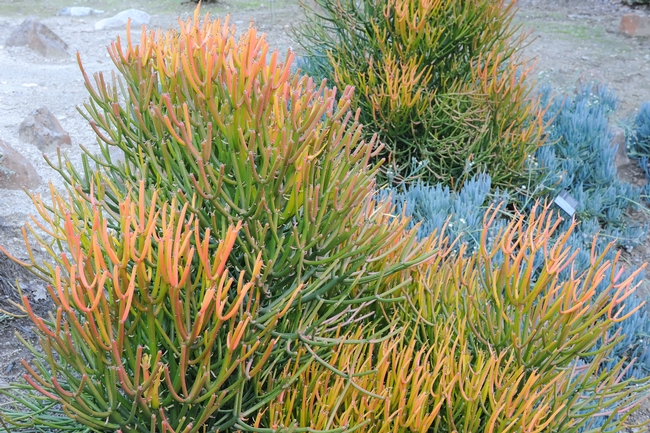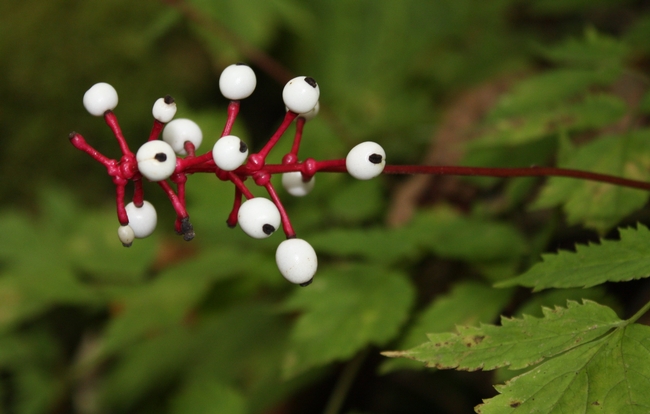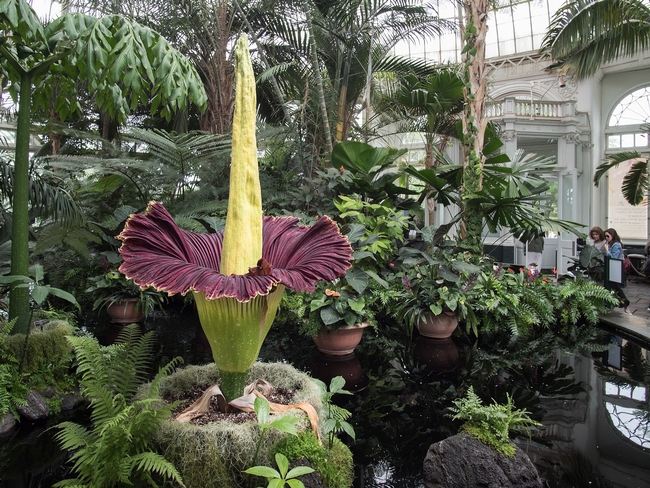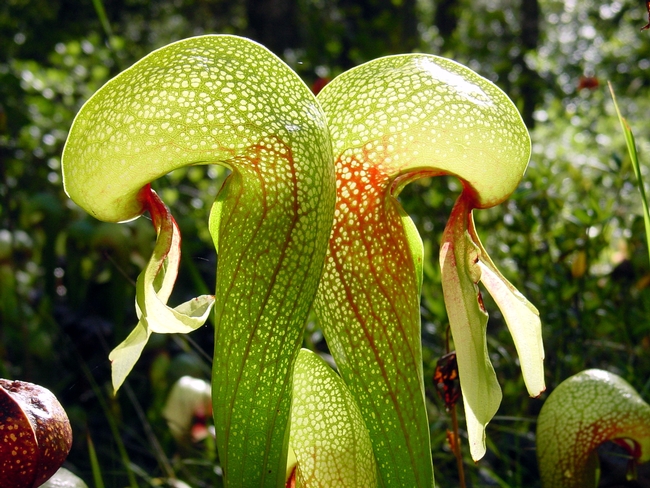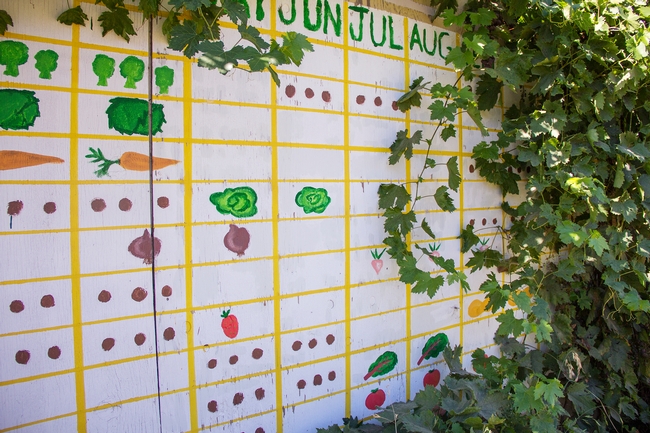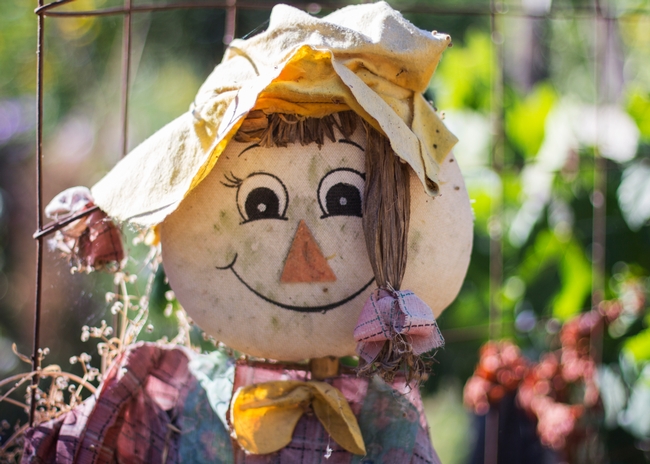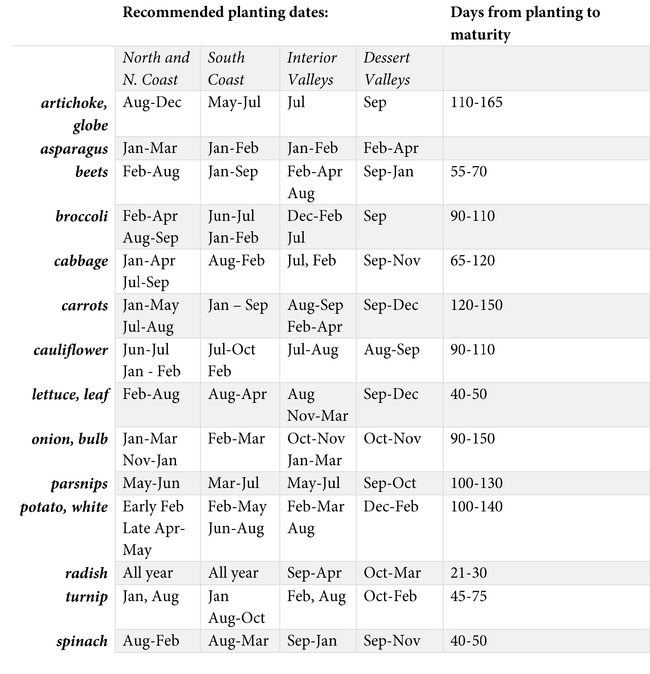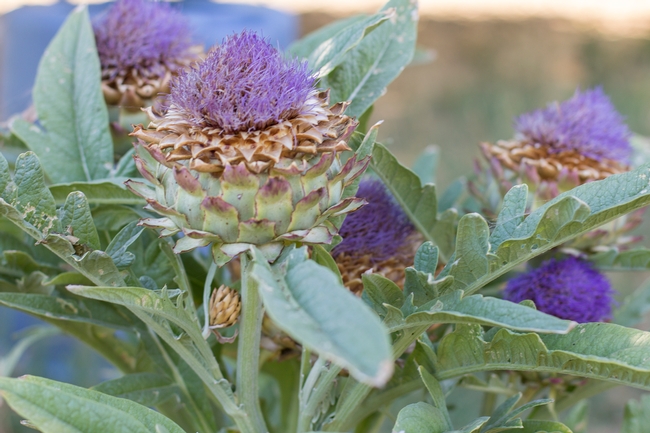Posts Tagged: Fall
Vampire plants!
Just like Dracula, parasitic plants get their nutritional needs met by feeding off other plants. Instead of fangs, these parasitic plants have specialized structures called haustoria that they use to pierce the cells of their host plant and suck out nutrients. In Latin, ‘haustor' means ‘the one who draws, drains or drinks.'
Unlike Dracula, these nefarious plants aren't folklore and you don't have to travel to Transylvania to find them. Below are three nutrient-sucking vampire plants you'll find in landscapes across California!
Snow plant
The common name snow plant doesn't give clues about its more sinister scientific name, Sarcodes sanguinea, which translates to ‘the bloody flesh-like thing' given its name because of its bright red color by famous botanist John Torrey. Sarcodes feeds off conifers and the fungal community that supports conifers. This plant doesn't need access to sunlight to grow, thriving in the dark coffin-like solitude of the forest floor.
California dodder
Though they rarely kill their host plant the California dodder, aka Cuscuta californica, is a parasitic vine that tightly entwines its host. Spending most of its life without any contact with the soil, dodder's thin orange filaments cover its host like the hair of Cousin It. Dodder seedlings are aggressive predators, locating their prey within days of sprouting. After attaching itself to its host plant the dodder's roots die, becoming completely dependent on its host to live.
Hellroot
Hellroot, or Orbanche minor, sends 12” flower spires up from the ground, as if Hades fingers were reaching up from the underworld. This parasitic plant has showy flowers that range in color from shades of pink to yellow and white. Hellroot cannot live without its host plant and prefers to suck nutrients from sweet red clover and members of the pea and daisy families.
Move over Bram Stoker, Botany is serving up the sinister this year. Happy Halloween!
9 Scary Plants to get you into the Halloween Spirit!
While mums, pumpkins and apple spices usually signal the fall season has arrived, Halloween is right around the corner. Why not opt for some creepy or scary plants in your home or landscape? These creepy plants are sure to get you into the Halloween spirit.
Read on ... if you dare!
Brain cactus (Mammillaria elongate)
Brain cactus, otherwise known as Mammillaria elongata ‘Cristata' does well in arid, dry conditions or as a houseplant. It's curvy stems twist and turn, wrapping around itself looking like a human brain. (Photo credit: Cliff)
Venus flytrap (Dionaea muscipula)
Probably one of the most well-known scary plants is the venus flytrap (Dionaea muscipula). This carnivorous plant was made famous in Little Shop of Horrors and its well known line, “feed me Seymour.” (Photo credit: Mokkie)
White ghosts (Monotropa uniflora)
These eye-catching plants have bright white droopy flowers reminiscent of ghosts found in spooky dark, dank basements. They hide in shady spots and live in a symbiotic relationship with a fungus in their roots providing food.(Photo credit: Will Brown)
‘Sticks on Fire' or pencil cactus (Euphorbia tirucalli)
Sticks on Fire, also known as fire sticks and pencil cactus and by its scientific name Euphorbia tirucalli, is a very popular succulent for its showy soft green to reddish-gold stem. A native of southern Africa, the smooth, coral-like stems look deceptively harmless, but looks can be deceiving. The sap is toxic. Caution and care should be always exercised with this plant. (Photo credit: mark6mauno)
Doll's eyes (Actaea pachypoda)
Doll's eyes plants are native to North America and have eyeball-like berries that are highly toxic to humans. You may never set your own orbs on this plant but if you're in the Midwest or Northeast, know that it will be watching you! (Photo credit: Michael Lusk)
Bleeding tooth fungus (Hydellum peckii)
This startling-looking fungus oozes fake blood through minute pores. The red goo is actually a result of a process called guttation that forces water into the roots during osmosis. This spooky sight is found mostly in the Pacific Northwest and Europe living peaceably in symbiosis with conifers. (Photo credit: Holger Krisp)
Corpse plant (Amorphophallus titanum)
The corpse plant, Amorphophallus titanum, only blooms its magnificent flower every seven to ten years. When it does, it lives up to its name giving off an odor that smells like the rotting flesh of a corpse. This adaptation attracts flesh flies and carrion-eating beetles, corpse flower pollinators. (Photo credit: Rhododendrites)
Cobra plant (Darlingtonia californica)
The cobra plant, also known as a cobra lily or California pitcher plant, is native to Northern California and southern Oregon. This carnivorous plant attracts insects and small animals into its long hollow leaves where they become trapped and drown. There, they liquefy and are absorbed by the plant for nutrients. This plant resembles a striking cobra, and is just as deadly for its tiny victims. (Photo credit: NoahElhardt)
Devil's claw or ram's horn (Proboscidea louisianica)
This unfriendly-looking species is native to the South Central United States and sports a unique horn-shaped seed pod. The dry, woody pods attach to human shoes and the paws of animals, hitchhiking to disperse seeds far and wide. In addition to its attention-grabbing visual appeal, the pod is used in basket-making traditions, and is also used to create pigments for dyes by several Indigenous Americans. (Photo credit: Frank Carey)
Resources:
It's a Scary Time of Year! by Janet Hartin (published Oct. 30, 2017)
Plant fall bulbs now for spring blooms! A recipe for bulb lasagna
Fall is the time to plant spring-flowering bulbs. As the cooler temperatures start to arrive in many parts of the country, the last thing on many people's minds is planting flowers for spring color in the garden. But, now is the perfect time to plant bulbs that will pack a punch of color to help usher out winter blues.
Start with a trip to your local nursery. When purchasing, look for heavy, dense bulbs with no decay, mold, or fungus. Bulbs should smell fresh and be free of cuts and bruises. Plant classics like daffodils and tulips or branch out with other textures, colors and heights with Fritillaria, Allium, Anemone and more.
Lasagna planting technique
The bulb planting technique of layering is also known as planting “lasagna-style.” Planting bulbs “lasagna-style” involves layering different bulb varieties in the same pot. Each bulb planted is selected based on its blooming times, planting depth and color.
By overlapping bulb bloom times you can create pots of long-lasting flowers and color. For three waves of bloom, select bulbs that bloom in early-spring, mid-spring, and late-spring. Bulb packages list bloom date information on the labels. When making bulb selections, consider choosing bulbs with overlapping bloom times so that the planting remains colorful all season.
Planting and positioning bulbs
Plant bulbs like you are making lasagna! Plant the largest bulbs approximately 8-inches deep, smaller bulbs 5-inches deep, and so on. Be sure to read the bulb package for planting depths. Potting soil is the “sauce” and used as the layer under and over your bulbs.
- Choose a container that is at least 12-14 inches deep, with good drainage.
- Select a potting soil that includes a slow release fertilizer OR add bone meal to your potting soil according to the package instructions. Bone meal is rich in Phosphorous and will promote fall root growth.
- Add a 2-3 inch layer of soil and then plant the largest bulbs approximately 8-inches deep, smaller bulbs 5-inches deep. Be sure to read the bulb package for planting depths. Large sized bulbs may include (king Alfred) daffodil, allium, and tulip.
- Potting soil is the “sauce” and is used as the layer under and over your bulbs. Once the first layer of bulbs is in, add another layer of potting soil about 2-3 inches deep. Measure the depth from the top rim of your pot down, you should have about 6” more to plant.
- The next layer will be a bulb that is planted about 6 inches below the surface, examples include Dutch hyacinth or a jonquil Narcissus. Leave approx. ¼” space between each bulb. Remember to not overcrowd bulbs as they will swell once watering begins.
- Add more “sauce” and cover previous bulbs with about 1” inch of soil.
- The next layer will finish your container off with bulbs, look for smaller bulbs like grape hyacinth and/or crocus. Remember to leave a little space in between bulbs.
- Top off with five inches of potting soil and add some pansies or other colorful cool weather annuals to maintain seasonal interest.
- Finally, add mulch and water regularly.
Lasagna bulb combinations
Sample Pot:
- Pansy and mulch (top)
- Snowdrop
- Crocus
- Hyacinth
- Tulip(bottom)
Sample Pot:
- Mulch (top)
- Crocus
- Grape Hyacinth
- Tulip
- Narcissus
- Large Allium (bottom)
Sample Pot:
- Thyme (top)
- Ranunculus
- Anemone
- Tulips
- Daffodils (bottom)
A beautiful spring show of blooms
As spring arrives, place your container in a spot with high visibility and enjoy the waves of colorful flowers as they emerge, bloom and die back. As each new layer of blooms appears, the previous layer's leaves will remain. You can clean up faded or dead flowers, but don't remove the leaves as they provide energy back to the bulb for next year's growth. This is a great project to do with children and share the experience as each flower variety goes through its life cycle.
Resources:
Recipe for Bulb Lasagna by Carolyn Neumann (published Sept. 17, 2012)
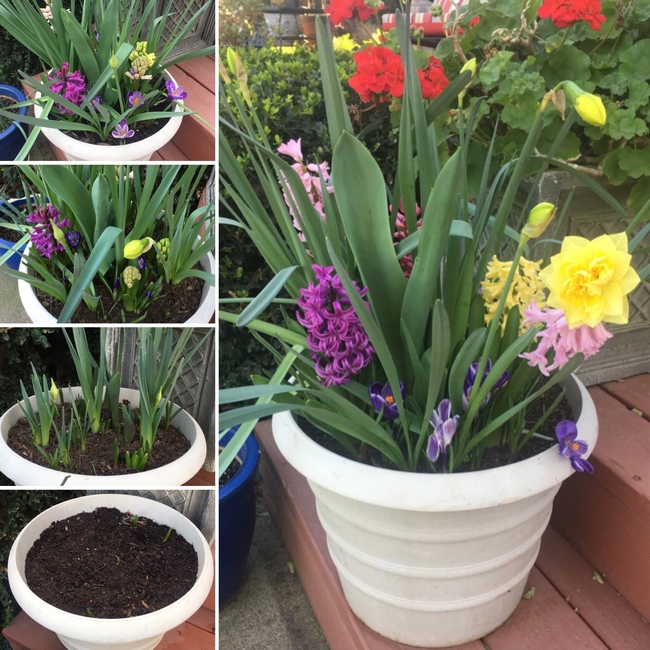
A display of bulbs blooming at different stages of growth. Bulbs shown are purple crocus, pink, yellow and purple hyacinth, yellow double ruffle daffodil and tulips. Photo: Lauren Snowden

different-flower-bulbs
Tips for a successful fall vegetable garden
Warm vs. cool season crops
Most vegetables are classified as either a warm season or cool season crop. This designation is based on the temperature range that the plants thrive in. Warm season crops grow best when the days are long and the temperatures are high (between 65°-95°F). In contrast, cool season crops grow and produce the best quality produce when the average temperatures are between 55°-75°F and are typically tolerant of light frosts when mature.
Typical cool season crops include root vegetables such as: beets, carrots, parsnips, and radishes; stems such as asparagus and rhubarb; leafy crops like cabbage, celery, lettuce, spinach and crops that have edible immature flowers like artichokes, cauliflower, and broccoli.
Importance of frost dates
“When deciding what to plant in your edible garden it is important to take into consideration the best months a crop will thrive,” says Missy Gable, statewide director for the UC Master Gardener Program. “Fall can be a very rewarding gardening season. There are a variety of delicious crops that can survive the cooler temps and have a short number of days to maturity.”
Guides for determining the first and last frost dates for a specific area or region are available using historical references from the National Weather Service. Visit the California Garden Web section “When should plant my garden? Frost dates” webpage for detailed information about when to safely plant frost-tender crops.
Cool season vegetable gardening at a glance:
Learn more with the UC Master Gardener Program
Originally published on UC ANR's Food Blog (09/13/2016)
Resources:
Vegetable Gardening Basics, http://anrcatalog.ucanr.edu/pdf/8059.pdf
California Gardening Web, cagardenweb.ucanr.edu/
California Master Gardener Handbook, Home Vegetable Gardening, page 338-339, anrcatalog.ucanr.edu
University of California Cooperative Extension Vegetable Research & Information Center, vric.ucdavis.edu





